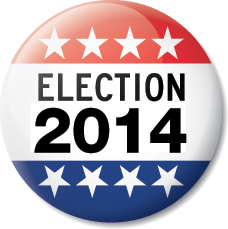Panama and its Presidential Candidates for 2014 Elections

On May 4, 2014 the Panamanian population will elect a new president for a period of 5 years. The new president should take over office July 1 2014. We know that this year a new president will be elected, but how much do we know about these presidential candidates or about this election? How will the future of Panama differ based on which candidate wins? The three most popular candidates running in the 2014 elections are: José Domingo Arias, Juan Carlos Navarro and Juan Carlos Varela.
Jose Domingo Arias
Candidate ruling Cambio Democrático (Democratic Change) (CD)
Jose Domingo Arias studied at the Faculty of Economics of the University of Buenos Aires. He began his professional career in the garment industry. Working in the sales sector he began selling door-to-door eventually he obtained an executive position in the company. When President Ricardo Martinelli took office in 2009 he invited him to be Deputy Minister of Foreign Trade. Jose Domingo Arias took on the position and was later promoted as Minister of Housing and Land Management (MIVIOT).
Juan Carlos Navarro
Leading Opposition Party (PRD)
Juan Carlos Navarro studied at the John F. Kennedy Government School at Harvard University. He was named one of the 100 most promising young leaders in the world, in 1994 by the International Magazine "Time”. Juan Carlos Navarro founded Ancon (National Association for the Conservation of Nature) and was Panama’s first environmental ambassador. Juan Carlos Navarro was elected Mayor of Panama City for two consecutive periods (second most important election post after the presidency).
Juan Carlos Varela
Panamanian Opposition Party
Juan Carlos Varela attended the Georgia Institute of Technology in the United States, where he earned a degree in Industrial Engineering, and moved on to become the Executive Vice President of the Varela Hermanos Company (Strong Capital Company in Panama). Varela was elected Vice President in the last election in 2009 with Ricardo Martinelli, he currently Vice President of the Republic of Panama although not part of the government.
On December 4, 2013 the Electoral Tribunal officially called the Panamanian people to elect the future president next May 4, thereby the first official step in this presidential race was taken. President Ricardo Martinelli who participated in this public event guaranteed that on July 1 of this year he will give the presidential sash to the winner of the elections on May 4. An important fact that stands out is that the current President of the Republic will transfer control of all levels, forces of law and order to Electoral Tribunal before May 4th (Election Day). This is a mechanism insure unbiased elections.
Panamanian elections have been transparent and reliable processes since the beginning of the democratic period 20 years ago, this commendable work has been possible thanks to Electoral Tribunal and to the candidates who did not win for accepting the people's vote.
After a brief profile of the presidential candidates and accreditations, what can we expect to Panama over the next 5 years?
Jose Domingo Arias promises to continue with the current government projects, and keep pace with the work done by President Ricardo Martinelli. This means he will focuses on major infrastructure and social assistance for citizens with low incomes. He also promotes projects that will drive domestic production that has been in a huge decline in recent years.
Juan Carlos Navarro says he will continue the good projects and improve the one that has not been done well, considering his biography it is expected that he will make reforms to improve the environmental situation in which Panama is now.
Juan Carlos Varela proposes more social support to people with limited financial resources and support for farmers in the interior. He has also shown interest in decreasing the high cost of basic goods.
Whichever candidate wins the presidential election it is important to note that Panama has experienced steady growth in many areas since the beginning of the 90s. Since that time, each government has given its contribution to make Panama the country with the highest economic growth in the region, and enjoyed the privileges of a country in the process of development.
